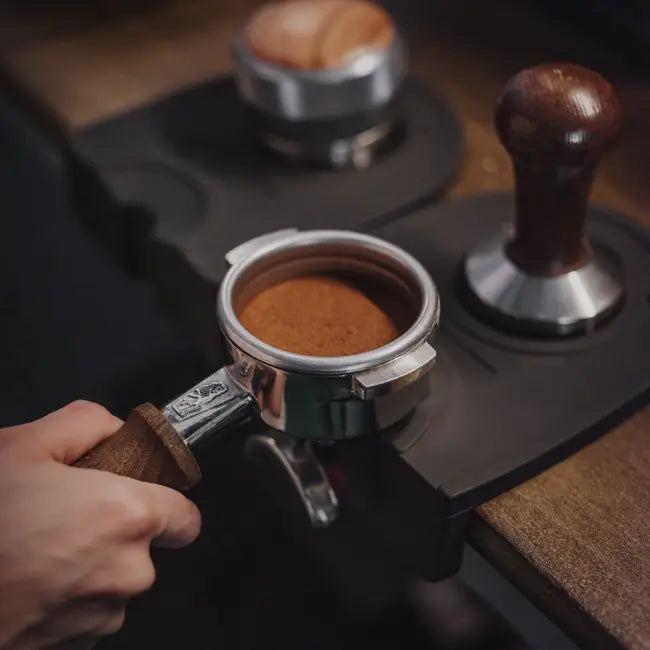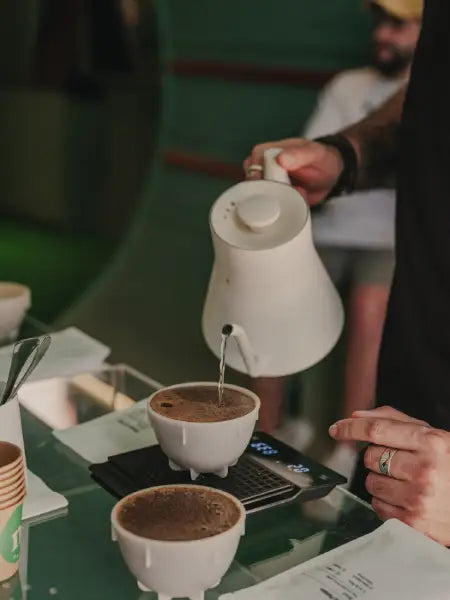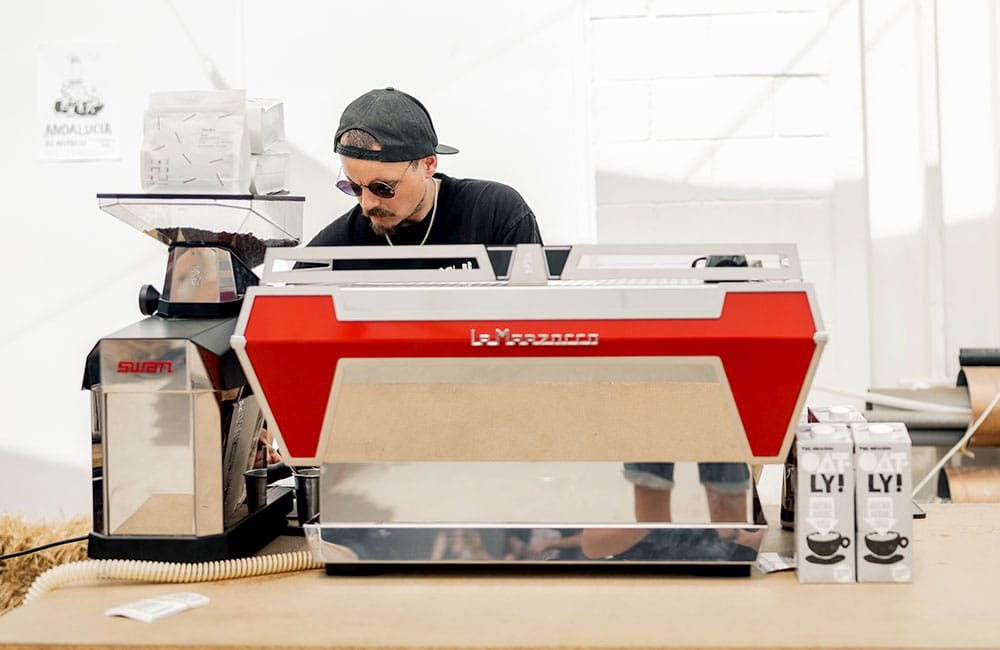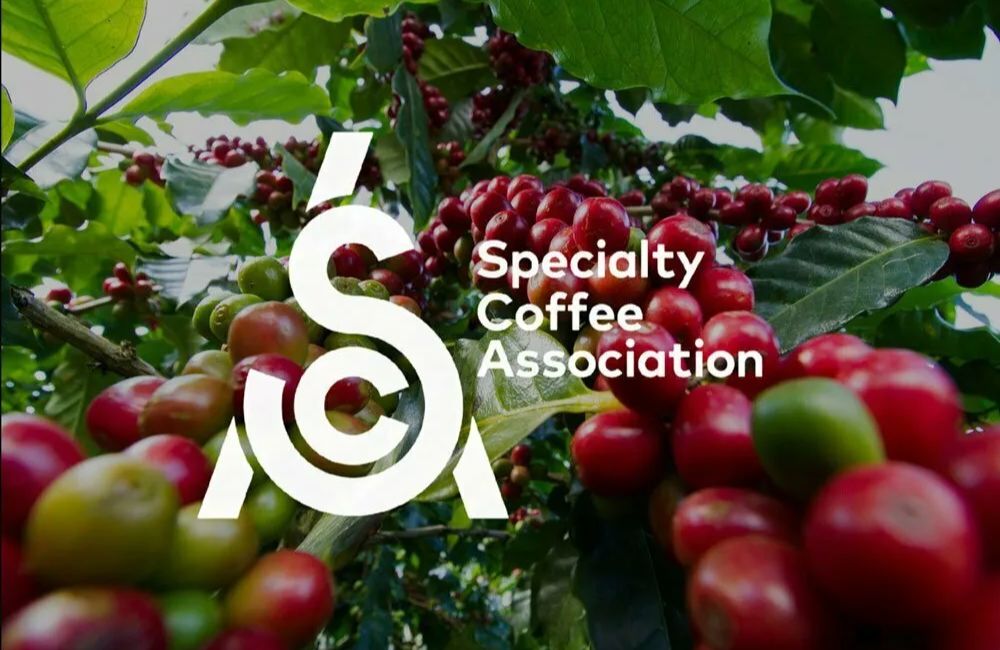¿Qué hace a los cafés especiales?
En un principio la respuesta podría parecer subjetiva, dependiendo de los gustos particulares.
Pero veremos que, para que un café sea realmente especial, tiene que reunir una serie de condiciones.
En este breve texto procuraremos darte las claves para que puedas diferenciar un café comercial de un café especial. Y también explicaremos porqué esto es importante, ya que no es nada subjetivo.
Cambia el perfil organoléptico, los cafés especiales son muchos más ricos al paladar, el perfil psicoactivo, puesto que suelen tener menor cantidad de cafeína, y el impacto medioambiental, ético y económico.
La mediocridad: el café comercial
 La mediocridad del café comercial la atribuimos a defectos del café y malas prácticas
La mediocridad del café comercial la atribuimos a defectos del café y malas prácticas
Lo que es común a todos los cafés es que la planta de la que se obtiene el fruto pertenece a la familia coffea, que contiene cafeína y que con él elaboramos una bebida. Pero eso nos dice muy poco sobre el café.
Y esta es, básicamente, toda la información que ofrece un café comercial. Nosotros usamos el término café comercial en contraposición a los cafés especiales o cafés de especialidad.
La mediocridad es un café con notas de sabor generalmente desagradables, amargas y estandarizadas; todos los cafés comerciales tienen un sabor parecido. Esta es la razón por la que es común que a mucha gente no les guste el café o que lo tomen con añadidos para disimular este mal sabor: leche, azúcar u otros condimentos.
El café normal, es decir, el más consumido habitualmente y que nosotros denominamos comercial, es prácticamente anónimo. No sabemos quién lo ha cultivado, de qué variedad es, dónde ha sido cultivado, a qué altitud o en qué fecha.
No sabemos quién lo ha recogido o qué procesado se le ha aplicado. Solo sabemos la marca, que puede o no ser quien lo ha tostado.
Todos estos factores afectan directamente al perfil organoléptico. Los cafés comerciales suelen tener un perfil de cata muy pobre o nulo y su impacto medioambiental, ético, social y económico está altamente cuestionable.

Tipos de cafés especiales
Los cafés especiales, por otro lado, tienen pedigrí. Es decir, sabemos quién los ha cultivado (el productor), qué plantas ha usado (la variedad), dónde (el origen y altitud), cuando fue recogido (la cosecha), cómo ha sido secado (el proceso) y quién lo ha tostado y cuando (tostador y fecha de tueste).
Todo esto no es superfluo. Saber quién lo ha cultivado permite establecer un trato justo y digno con ellos. Saber la variedad, el origen y la altitud establece trazabilidad. Saber la fecha de cosecha nos permite saber si es fresco. Saber el proceso nos permite saber qué esperar en taza y cómo tostarlo.
Y saber el tostador y la fecha de tueste nos asegura un tueste correcto y que lo consumimos en su mejor momento.
Todos estos factores, desde la variedad, el tipo de terreno o la altitud hasta el tipo de procesado y tostado, influyen en el sabor del café. Y las múltiples combinaciones de todos estos factores es lo que crea la gran variedad de perfiles en taza.
Es decir, son cafés con diferentes notas de cata y con mucha riqueza y sutileza en el paladar.
Además, parte de la filosofía detrás de los cafés especiales o de especialidad, es que han de ser respetuosos con el medio ambiente y de trato justo. Esta es la única forma de que sea sostenible a largo plazo.
Si quieres saber más sobre todas las diferencias entre un café comercial y un café de especialidad, te recomendamos que leas este post: ver cafés de calidad
 Son muchos los factores que hacen un café especial, desde el cultivo hasta la preparación, todo influye
Son muchos los factores que hacen un café especial, desde el cultivo hasta la preparación, todo influye
Cómo identificar cafés especiales
Un tostador que trabaja con cafés especiales querrá saber y que sepas todo lo referente al origen y el proceso para poder tostarlo adecuadamente. Además, proporcionará esta información, así como el tipo de tueste, la fecha y las notas de cata al consumidor.
Por eso, podemos hacer un listado con la información que necesitamos para identificar un café especial:
- Finca, estación de lavado y/o productor
- País de origen y región
- Altura de la plantación
- Variedad o variedades de cafetos
- Fecha de cosecha
- Tipo de procesado
- Notas de cata
- Fecha de tueste
Esta información nos la proveerá el tostador tanto en el paquete como en la ficha adjunta sobre el café que lo suele acompañar. También puede, que, como hacemos en Ineffable Coffee, se amplíe esta información en tres pasos, dependiendo de formato y espacio: paquete, ficha y blog en la página web.
Dónde encontrar la información
Como consumidores, el primer lugar para buscar esta información es en el mismo paquete. En este puede que no este toda en detalle, pero siempre ha de figurar la más importante. Usemos uno de los cafés con los hemos trabajado en Ineffable Coffee como ejemplo:  Información que debemos encontrar en un paquete de cafés especiales Si en el paquete de café encontramos toda esta información, es una primera garantía de que se trata de un café especial. Además, el tostador puede ampliar esta información con otros datos importante con una ficha específica del café:
Información que debemos encontrar en un paquete de cafés especiales Si en el paquete de café encontramos toda esta información, es una primera garantía de que se trata de un café especial. Además, el tostador puede ampliar esta información con otros datos importante con una ficha específica del café: 
Información que aparece en la ficha de un cafés especial de Ineffable Coffee
Y, por último, en Ineffable Coffee completamos esta información con un artículo específico en nuestro blog. Este no solo ofrece datos importantes, si no que nos acerca a los caficultores, la región donde se ha cultivado, nos explica el proceso en detalles e, incluso, nos da información sobre el impacto económico y medioambiental.
Siguiendo con el mismo café que hemos visto para el paquete y la ficha, esta es la entrada en el blog que lo acompaña: Lombardía 120H
El empaquetado de los cafés especiales
Para la correcta conservación del café este debe ir debidamente empaquetado. Lo más importante del paquete es que este esté termosellado, con un cierre hermético y que no deje pasar la luz. Además, debe de tener una válvula unidireccional para que expulse el dióxido de carbono y que no entre oxígeno, lo que retarda la oxidación y conserva mejor sus cualidades. 
Información sobre un correcto empaquetado de un café especial
Los paquetes de Ineffable Coffee son 100% compostables y tienen un cuidado diseño.
El hecho de que sean compostables va en línea con nuestra filosofía de trabajar con cafés respetuosos con el medio ambiente y de comercio justo.
Nuestra visión sobre el diseño es que creemos que un buen producto necesita un envoltorio que le haga justicia.
Este refleja todo el cuidado, atención y amor que ponemos nosotros, así como el que han puesto todos lo que lo han trabajado antes en la cadena de producción.
¿Podemos identificar un café especial solo por grano?
La gran diferenciación de los cafés especiales es que son granos muy bien seleccionados desde la planta hasta tu taza:
- Todos los cafés son de la especie arábica, que a su vez tiene cientos de variedades
- Se selecciona el lugar para la plantación
- Se seleccionan los granos durante la recolecta, solo cogiendo las cerezas maduras
- Se seleccionan las cerezas antes y después del procesado
- Se selecciona el café y se hacen diferentes lotes de acuerdo a su variedad botánica
- A cada lote se le aplica un procesado específico
- Se selecciona el perfil de tueste de cada lote
La selección experta desde la plantación, cosecha y durante todos los procesos de procesado y secado son unos de los secretos que dan como resultado un café realmente especial. 
Diferencias que podemos encontrar entre los granos de cafés especiales y cafés comerciales
Además, podemos diferencias café especial de uno comercial porque el café especial:
- Tendrá un tueste claro o medio. Nunca torrefacto.
- Tendrá un tueste uniforme
- No tendrá defectos
Cómo preparar cafés especiales
La forma en la que preparamos un café especial dependerá tanto del café como de nuestros gustos particulares.
Hay cafés que, por su origen, proceso y tostado saldrán mejor en una máquina de espresso. Otros, en cambio, lucirán mejor con un método de filtro, por ejemplo, la AeroPress.
Esto es algo que, generalmente, también nos indicará el tostador, puesto que el tipo de tostado influirá.
Aunque cualquier café especial saldrá bien en cualquier método si seguimos las pautas correctas, especialmente respecto a la molienda (si te interesa, en este post lo explicamos exhaustivamente).
Y, por último, están las recetas de cafés especiales. Hay muchos métodos y técnicas para ello y en este link te dejamos algunas guías de preparación para que puedas disfrutar de un café especial en tu propia casa.









